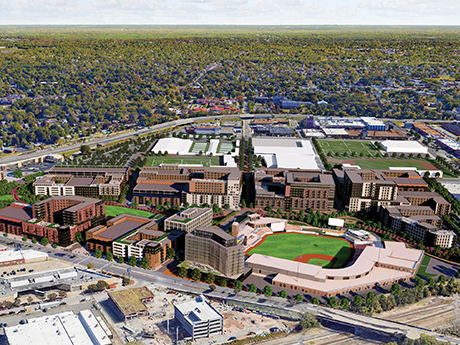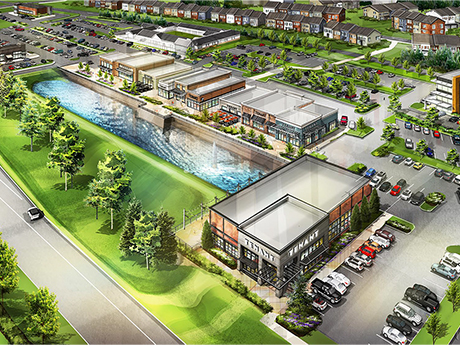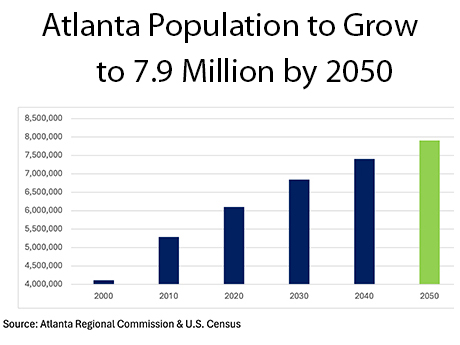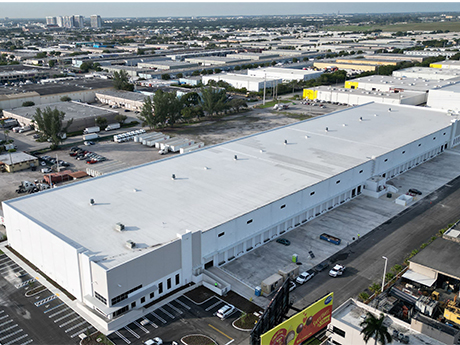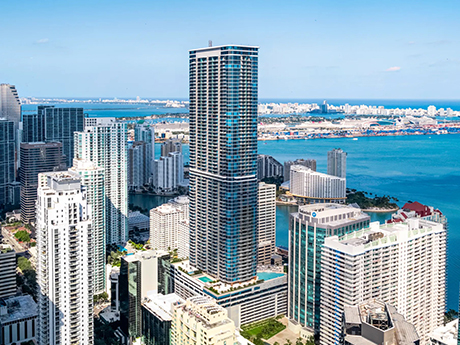Richmond, capital of the Commonwealth of Virginia and centrally located between the rolling hills of the Blue Ridge Mountains and the sandy beaches fronting the Atlantic Ocean, remains a vibrant city with an educated and expanding workforce benefitting from the city’s thriving and diverse economy. Home to eight Fortune 500 companies and three Fortune 1000 businesses, Richmond’s unemployment rate of 2.8 percent, a 10-basis-point decrease year-over-year, is slightly above the state’s unemployment rate of 2.7 percent but well below the national rate of 4.3 percent, according to data from the U.S. Bureau of Labor Statistics. Richmond’s job market has remained robust, adding over 38,000 jobs from first-quarter 2020 through summer 2024. In the past 36 months alone, CoStar Group (2,000 new jobs), LEGO (1,760 new jobs), and SanMar (1,000 new jobs) have all announced significant corporate and capital commitments to the market. Government and education/health remain the largest regional employment sectors and have experienced the highest year-over-year employment increases of 3.7 percent and 4.7 percent, respectively. Richmond’s continued ability to retain and attract talent due to a high quality of life, affordable cost of living and access to an abundance of local and regional amenities has had a profound impact …
Southeast Market Reports
Richmond’s Retail Market Is as Hot as a Firecracker, With a New Baseball Stadium Underway
by John Nelson
If you asked any retail broker in the Richmond market in April 2020 what the forecast might look like, the response would be dark and stormy skies ahead with record-high retail vacancy rates. Fast forward four years later, and the forecast has been quite the opposite, with sunny skies in terms of deal flow and record-low retail vacancy rates, both a positive and a negative as it relates to the vacancy rate itself. Richmond boasts close to 82 million square feet of retail space, and at the end of the second quarter of this year, the vacancy rate stood at 3 percent. Despite COVID, the vacancy rate stood at 5.1 percent at the end of 2020. The market is experiencing record-high demand for new space and about a 15.6 percent year-over-year increase in quoted rental rates due to that demand and limited product availability. Since 2020, our market has seen, on average, 2 million square feet of retail space leased per year, and all signs point to steady leasing velocity in the future. Short Pump, Hull Street West The Short Pump and Hull Street West submarkets continue to be the prime focus of many retailers looking to expand in …
We are fortunate to live and work in a region that experiences steady growth and maintains a healthy economy. From a commercial real estate perspective, the Richmond market is a consistent performer due to its diversified economy and reliable and consistent business drivers. Industrial and multifamily construction activity has remained strong without being overbuilt, eliminating the pattern of “boom and bust” that some other areas experience. A submarket that has been red hot is Scott’s Addition, a 20-square-block neighborhood that has been transformed from warehouses and light industrial to a mixed-use mecca of multifamily, office and retail. Developers and tenants alike appreciate the proximity to the interstate, numerous amenities and abundant diversity within the community. Exceptional walkability scores, along with a thriving restaurant and brewery scene, seem to be driving tenants’ willingness to pay the highest rents in the area. The high cost of new construction also informs these rents and, ultimately, is passed through to end users. Scott’s Addition will likely continue to be a desirable location for many, although high rents and challenging parking will remain an issue for some. Another very desirable submarket and consistent performer is Glen Forest. Primarily office- and medical-focused, this area offers Class …
In the Tampa Bay area, industrial activity remains strong to this point in 2024. According to market research from Colliers, the industrial market closed the first quarter of the year with a vacancy rate below 6 percent. From 2019 to 2022, leasing activity increased, with some fluctuations between quarters. Meanwhile, 2023 saw more than 12.2 million square feet of renewals, expansions and new leases in the greater Tampa Bay area. The data backs up what we are seeing as brokers – a high-demand market with positive net absorption. With that, there are also several trends that have emerged in 2024. 1.) A generally competitive but well-balanced market. While the Tampa Bay industrial market is competitive, it’s overall well-balanced — favoring neither the landlord nor tenant in its current state (of course, dependent on size and submarket). This balance can be attributed to a slowdown in new construction, high occupancy rates, rising rental rates and continued strong demand. However, rates are not rising as quickly as they have been in the past few years, and tenants are selective about space and want to see several options and thoroughly survey the market before executing a deal. There are also pockets of the …
Remember the “retail apocalypse”? Fast forward to today and it seems to be quite a different story. Retail is currently viewed by many as the most attractive sector within the commercial real estate industry, due in part to an all-time low vacancy rate and increasing rental rates. Atlanta’s retail vacancy rate has dropped to 3.6 percent, which is the lowest rate on record according to CoStar Group. The low vacancy rate coupled with an extremely limited amount of new retail space under development due to high construction costs has created a market unlike anything we have seen in a long time. Increased construction costs along with higher interest rates have made it cost-prohibitive to build traditional retail power centers; however, grocery-anchored retail is the anomaly with Publix taking the lead. Several mixed-use developments that include a large retail component are underway as well, including High Street in Dunwoody, Medley in Johns Creek and Centennial Yards in downtown Atlanta, just to name a few. Additionally, some retail space has been taken off line as malls reinvent themselves. Examples include the partial demolition of North DeKalb Mall in Decatur to make way for a new mixed-use development known as Lulah Hills; Northlake …
The Memphis office market continues to defy national post-pandemic office trends, fueled by persistent occupier demand and limited amounts of vacancy within primary submarkets. Although, the market closed out the 2023 year with 34,430 square feet of occupancy losses caused by two large tenant vacancies, the first quarter of 2024 reversed the trend as net absorption swung positive, recording 140,788 square feet of occupancy gains. The Memphis unemployment rate remained low at 3.5 percent in May, just above the Tennessee unemployment rate of 3.0 percent and below the national average of 4.0 percent, according to data from the U.S. Bureau of Labor Statistics. Ford Motor Company’s Blue Oval City began its hiring in 2023, with most of its hiring to occur in the second half of this year, which could begin to further compress the unemployment rate, as approximately 5,600 direct jobs are estimated to be created in West Tennessee. The company leased 42,910 square feet of office space on the edge of the Memphis office market. The auto giant plans to use the new space as a training facility. Additionally, the Elon Musk-led xAI company announced Memphis as being the new home for its “Gigafactory of Compute,” claiming to …
By Charlie Adams and Walker Adams of NAI Brannen Goddard Industrial real estate in Atlanta is in limbo as of the second quarter of 2024. Certain submarkets in Atlanta have been overbuilt and tenant demand with historically active users (third-party logistics, wholesale, e-commerce, etc.) has decreased in comparison to what was seen over the last four years. As a result of the space grab during COVID-19, many logistics tenants are sitting on excess inventory within their buildings. Consumer demand has cooled, increased interest rates have dampened the economy as a whole and rents have risen 14.5 percent year-over-year, according to CBRE’s most recent report. The impact of these headwinds for traditional industrial (warehouse and distribution) real estate is positive. Developers haven’t had the fundamentals allowing overbuilding to a point of hyper-supply. Industrial construction starts have been few and far between over the past 12 months, and we believe this lack of new supply will keep Atlanta’s fundamentals healthy through this limbo we’re currently experiencing. With 4 million square feet of net absorption in first-quarter 2024 and 15.9 million square feet under construction, we should see 2025 vacancy in line with current vacancy, assuming absorption continues at a similar pace. Therefore, …
By Will Mathews and Mike Kidd of Colliers What is the reason behind Atlanta’s explosive growth over the last 20 to 30 years? Simply put, it’s been the exponential increase in population driven by an influx of new residents from the Northeast, Midwest and Mid-Atlantic. Atlanta is home to 17 Fortune 500 companies (the third-largest market in the nation), numerous high-paying jobs, a culturally diverse population and multiple prestigious universities, laying a strong foundation for incredible net migration. Multifamily investors are drawn to Atlanta, evidenced by the region’s high volume of multifamily transactions. According to MSCI Real Capital Analytics, Atlanta is currently ranked No. 4 in the country behind New York City, Dallas and Los Angeles in transactions. Despite challenges related to new supply and systematic traffic problems, the future of Atlanta’s multifamily market is very bright for a number of reasons. 7.9 Million by 2050 According to the Atlanta Regional Commission, the population of Atlanta will grow to 7.9 million, or an increase of 1.8 million people from 2020 to 2050. One of the direct beneficiaries of population growth is multifamily rent growth. Reflecting recent population trends, rent growth is forecasted to peak in the suburban counties east of …
By Ben Eisenberg of Transwestern In 2023 and continuing into 2024, Miami’s industrial sector experienced moderate growth due to reduced lease turnover and despite accelerating interest rates and economic uncertainty. However, the market’s strong industrial fundamentals and international connectivity via Miami International Airport and PortMiami continue to demonstrate its enduring strength and resilience. Miami’s industrial market is powered by freight, logistics and e-commerce demand, along with traditional distribution, service and light assembly. The region continues to experience steady population growth that drives sustainable consumption of goods and services and, ultimately, the need for warehouse space. Accounting for nearly 27 percent of Florida’s overall population, Miami was home to more than 6.2 million people at the end of 2023 and is projected to grow to 6.3 million this year. The region’s population has expanded by nearly 7.6 percent over the past 10 years. Increased migration to the Sun Belt has boosted wealth, disposable income and consumption, making Miami one of the nation’s wealthiest metro areas, with some of the highest average home values. In the first quarter of 2024, Miami’s unemployment rate reached a record low of 1.5 percent and has remained below 2 percent since the fourth-quarter 2022. The region’s …
Miami’s multifamily sector was on fire from the end of 2020 through the beginning of 2023 as the market received a wave of newcomers, primarily from affluent Northeastern and Western states. During the height of the pandemic, roughly $1 out of every $6 in income that moved nationwide relocated to Florida, more than any other state. And Miami-Dade County saw the second highest inflows of any county in the country behind only Palm Beach, two counties to the north of Miami-Dade. This influx resulted in tremendous rent growth, booming new development and record-setting sales. The period also marked dozens of corporate expansions and relocations to the area and a consistent sub-3 percent unemployment rate dating back to August 2022, which is below today’s 3.8 percent national rate. Since then, things have slowed down, though the epic in-migration of wealth has made a permanent impact. Miami’s multifamily fundamentals stand out as a beacon of resilience amid supply challenges across the Sun Belt. Infill rents have remained flat since 2022, notching slight increases in 2024, and occupancy has faltered only slightly. This is rarely celebrated, but in this case, it represents Miami’s unique strength. Demand also emerged for a higher caliber of …


